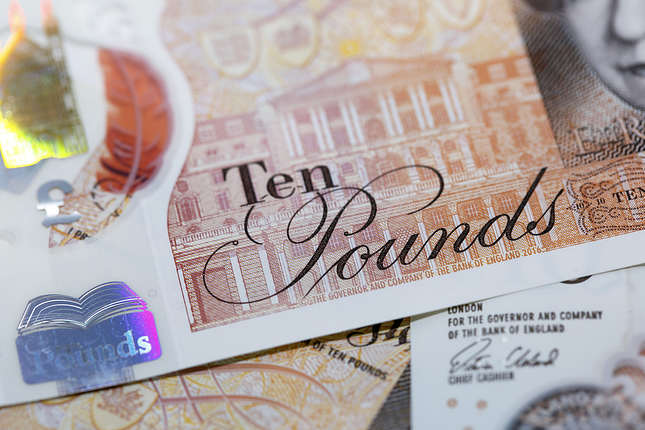- AUD/USD faced renewed selling pressure at the week's start.
- Rising skepticism about China’s latest stimulus measures collaborated with the sour mood.
- A strong USD also favored the Aussie’s downside.
The Australian Dollar declined against the US Dollar on Monday following the release of weak China trade data. The AUD/USD fell by 0.45% to 0.6720. The declines in the Australian Dollar were largely due to rising skepticism about the effectiveness of China's latest stimulus measures and a sour mood among traders. In addition, the USD continues strengthening, which is another factor pressuring the pair lower.
Economic forecasts for Australia are mixed with both positive and negative indicators. On the other hand, the Reserve Bank of Australia (RBA) started to turn somewhat dovish, but financial markets anticipate a modest reduction in interest rates of only 0.25% in 2024. The short-term outlook of the Aussie will also be guided with the economic situation in China, which is a large trading partner.
Daily digest market movers: Australian Dollar declines due to weak China trade data and strong US Dollar
- The Australian Dollar fell for two consecutive days, testing the 0.6700 support level.
- The US Dollar strengthened, while skepticism about China's stimulus measures weighed on the Aussie Dollar.
- Copper and iron ore prices declined, contributing to the Australian Dollar's pullback.
- The RBA has shifted toward a more dovish outlook, dropping guidance on short-term rate stability. Market sentiment suggests a 55% chance of an RBA rate cut by year-end.
AUD/USD technical outlook: Bearish momentum presides with support at 0.6720
The Australian Dollar weakened against the USD on Monday as the Relative Strength Index (RSI) entered the negative area at 40. The RSI's sharp decline suggests that selling pressure is rising. Additionally, the Moving Average Convergence Divergence (MACD) remains flat and red, indicating that selling pressure remains present and the short-term outlook is bearish.AUD/USD has been trading sideways in a narrow range for the past three sessions, but the overall trend remains bearish. Support levels are at 0.6720, 0.6700 and 0.6680, while resistance levels are at 0.6760, 0.6780 and 0.6800. A break below 0.6720 could lead to a further decline in the pair.
Australian Dollar FAQs
One of the most significant factors for the Australian Dollar (AUD) is the level of interest rates set by the Reserve Bank of Australia (RBA). Because Australia is a resource-rich country another key driver is the price of its biggest export, Iron Ore. The health of the Chinese economy, its largest trading partner, is a factor, as well as inflation in Australia, its growth rate and Trade Balance. Market sentiment – whether investors are taking on more risky assets (risk-on) or seeking safe-havens (risk-off) – is also a factor, with risk-on positive for AUD.
The Reserve Bank of Australia (RBA) influences the Australian Dollar (AUD) by setting the level of interest rates that Australian banks can lend to each other. This influences the level of interest rates in the economy as a whole. The main goal of the RBA is to maintain a stable inflation rate of 2-3% by adjusting interest rates up or down. Relatively high interest rates compared to other major central banks support the AUD, and the opposite for relatively low. The RBA can also use quantitative easing and tightening to influence credit conditions, with the former AUD-negative and the latter AUD-positive.
China is Australia’s largest trading partner so the health of the Chinese economy is a major influence on the value of the Australian Dollar (AUD). When the Chinese economy is doing well it purchases more raw materials, goods and services from Australia, lifting demand for the AUD, and pushing up its value. The opposite is the case when the Chinese economy is not growing as fast as expected. Positive or negative surprises in Chinese growth data, therefore, often have a direct impact on the Australian Dollar and its pairs.
Iron Ore is Australia’s largest export, accounting for $118 billion a year according to data from 2021, with China as its primary destination. The price of Iron Ore, therefore, can be a driver of the Australian Dollar. Generally, if the price of Iron Ore rises, AUD also goes up, as aggregate demand for the currency increases. The opposite is the case if the price of Iron Ore falls. Higher Iron Ore prices also tend to result in a greater likelihood of a positive Trade Balance for Australia, which is also positive of the AUD.
The Trade Balance, which is the difference between what a country earns from its exports versus what it pays for its imports, is another factor that can influence the value of the Australian Dollar. If Australia produces highly sought after exports, then its currency will gain in value purely from the surplus demand created from foreign buyers seeking to purchase its exports versus what it spends to purchase imports. Therefore, a positive net Trade Balance strengthens the AUD, with the opposite effect if the Trade Balance is negative.
Information on these pages contains forward-looking statements that involve risks and uncertainties. Markets and instruments profiled on this page are for informational purposes only and should not in any way come across as a recommendation to buy or sell in these assets. You should do your own thorough research before making any investment decisions. FXStreet does not in any way guarantee that this information is free from mistakes, errors, or material misstatements. It also does not guarantee that this information is of a timely nature. Investing in Open Markets involves a great deal of risk, including the loss of all or a portion of your investment, as well as emotional distress. All risks, losses and costs associated with investing, including total loss of principal, are your responsibility. The views and opinions expressed in this article are those of the authors and do not necessarily reflect the official policy or position of FXStreet nor its advertisers. The author will not be held responsible for information that is found at the end of links posted on this page.
If not otherwise explicitly mentioned in the body of the article, at the time of writing, the author has no position in any stock mentioned in this article and no business relationship with any company mentioned. The author has not received compensation for writing this article, other than from FXStreet.
FXStreet and the author do not provide personalized recommendations. The author makes no representations as to the accuracy, completeness, or suitability of this information. FXStreet and the author will not be liable for any errors, omissions or any losses, injuries or damages arising from this information and its display or use. Errors and omissions excepted.
The author and FXStreet are not registered investment advisors and nothing in this article is intended to be investment advice.
Recommended content
Editors’ Picks

GBP/USD churns ahead of UK wages and labor figures
GBP/USD churned chart paper just north of 1.3000 on Monday, with markets striking a laid-back tone ahead of key UK data due to release in the first half of the trading week. UK wages and jobs additions are slated for early Tuesday, with UK Consumer Price Index and Producer Price Index inflation in the barrel for Wednesday.

EUR/USD remains depressed below 1.0900, lowest since August 8 amid stronger USD
The EUR/USD pair drifts lower for the second straight day on Tuesday and drops to the 1.0890 area in the last hour, back closer to its lowest level since August 8 touched the previous day. Bearish traders, however, need to wait for a break below the 200-day SMA before placing fresh bets ahead of the key central bank event risk.

Gold price edges lower amid stronger USD, downside potential seems limited
Gold price trades with a negative bias for the second straight day on Tuesday and is pressured by a combination of factors. Traders no longer expect another outsized interest rate cut by the Federal Reserve in November, which had been a key factor behind the recent upswing in the US Treasury bond yields.

Bitcoin Price Forecast: BTC eyes return to all-time highs
Bitcoin trades close to $66,000 on Monday. The largest asset by market capitalization has noted a steady increase in its demand among traders since April 2024, according to data from crypto intelligence tracker CryptoQuant.

RBA widely expected to keep key interest rate unchanged amid persisting price pressures
The Reserve Bank of Australia is likely to continue bucking the trend adopted by major central banks of the dovish policy pivot, opting to maintain the policy for the seventh consecutive meeting on Tuesday.

Five best Forex brokers in 2024
VERIFIED Choosing the best Forex broker in 2024 requires careful consideration of certain essential factors. With the wide array of options available, it is crucial to find a broker that aligns with your trading style, experience level, and financial goals.